SYLLABUS GENERAL CHEMISTRY II
UNIT-I: Acids, bases, and Ionic equilibria
Concepts of Acids and Bases – Arrhenius concept, Bronsted-Lowry concept,
Lewis concept; Relative strengths of acids, bases and dissociation constant; dissociation of poly basic acids, ionic product of water, pH scale, pH of solutions; Degree of dissociation, common ion effect, factors affecting degree of dissociation; acid base indicators, theory of acid base indicators – action of phenolphthalein and methyl orange, titration curves – use of acid base indicators;
Buffer solutions – types, mechanism of buffer action in acid and basic buffer, Henderson-Hasselbalch equation;
Solubility product – determination and applications.
UNIT-II: Chemistry of s – Block Elements
Hydrogen: Position of hydrogen in the periodic table. Alkali metals: Comparative study of the elements with respect to oxides, hydroxides, halides, carbonates, and bicarbonates. Diagonal relationship of Li with Mg. Preparation, properties and uses of NaOH, Na2CO3, KBr, KClO3 alkaline earth metals. Anomalous behavior of Be.
Chemistry of p- Block Elements (Group 13 & 14)
preparation and structure of diborane and borazine. Chemistry of borax. Extraction of Al and its uses. Alloys of Al.
comparison of carbon with silicon. Carbon-di-sulphide– Preparation, properties, structure and uses. Percarbonates, per monocarbonates and per dicarbonates.
UNIT-III: Chemistry of p- Block Elements (Group 15-18)
General characteristics of elements of Group 15; chemistry of H2N-NH2, NH2OH, HN3 and HNO3. Chemistry of PH3, PCl3, PCl5, POCl3, P2O5 and oxy acids of phosphorous (H3PO3 and H3PO4).
General properties of elements of group16 – Structure and allotropy of elements – chemistry of ozone – Classification and properties of oxides – oxides ofsulphurandselenium–Oxyacidsofsulphur(Caro’sandMarshall’sacids).
Chemistry of Halogens: General characteristics of halogen with reference to electro-negativity, electron affinity, oxidation states and oxidizing power. Peculiarities of fluorine. Halogen acids (HF, HCl, HBr and HI), oxides and oxy acids (HClO4). Inter-halogen compounds (ICl, ClF3, BrF5 and IF7), pseudo halogens [(CN)2 and (SCN)2] and basic nature ofIodine.
Noble gases: Position in the periodic table. Preparation, properties and
structure of XeF2, XeF4, XeF6 and XeOF4; uses of noble gases – clathrate compounds.
UNIT-IV: Hydrocarbon Chemistry-I
Petroproducts: Fractional distillation of petroleum; cracking, isomerisation, alkylation, reforming and uses
Alkenes-Nomenclature, general methods of preparation – Mechanism of - elimination reactions – E1 and E2 mechanism – factors influencing – stereochemistry – orientation – Hofmann and Saytzeff rules. Reactions of alkenes – addition reactions – mechanisms – Markownikoff’s rule, Kharasch effect, oxidation reactions – hydroxylation, oxidative degradation, epoxidation, ozonolysis;polymerization.
Alkadienes
Nomenclature – classification – isolated, conjugated and cumulated dienes; stability of conjugated dienes; mechanism of electrophilic addition to conjugated dienes – 1, 2 and 1, 4 additions; free radical addition to conjugated dienes– Diels–Alder reactions – polymerisation – polybutadiene, polyisoprene (natural rubber), vulcanisation,polychloroprene.
Alkynes
Nomenclature; general methods of preparation, properties and reactions; acidic nature of terminal alkynes and acetylene, polymerisation and isomerisation.
Cycloalkanes: Nomenclature, Relative stability of cycloalkanes, Bayer’s strain theory and its limitations. Conformational analysis of cyclohexane, mono and di substituted cyclohexanes.
Geometrical isomerism in cyclohexanes.
UNIT-V: Hydrocarbon Chemistry – II
Benzene: Source, structure of benzene, stability of benzene ring, molecular orbital picture of benzene, aromaticity, Huckel’s (4n+2) rule and its applications. Electrophilic substitution reactions – General mechanism of aromatic electrophilic substitution – nitration, sulphonation, halogenation, Friedel-Craft’s alkylation and acylation. Mono substituted and disubstituted benzene – Effect of substituent – orientation and reactivity.
Polynuclear Aromatic hydrocarbons: Naphthalene – nomenclature, Haworth synthesis; physical properties, reactions – electrophilic substitution reaction, nitration, sulphonation, halogenation, Friedel – Crafts acylation & alkylation, preferential substitution at – position – reduction, oxidation – uses.
Anthracene – synthesis by Elbs reaction, Diels – Alder reaction and Haworth synthesis; physical properties; reactions – Diels-Alder reaction.

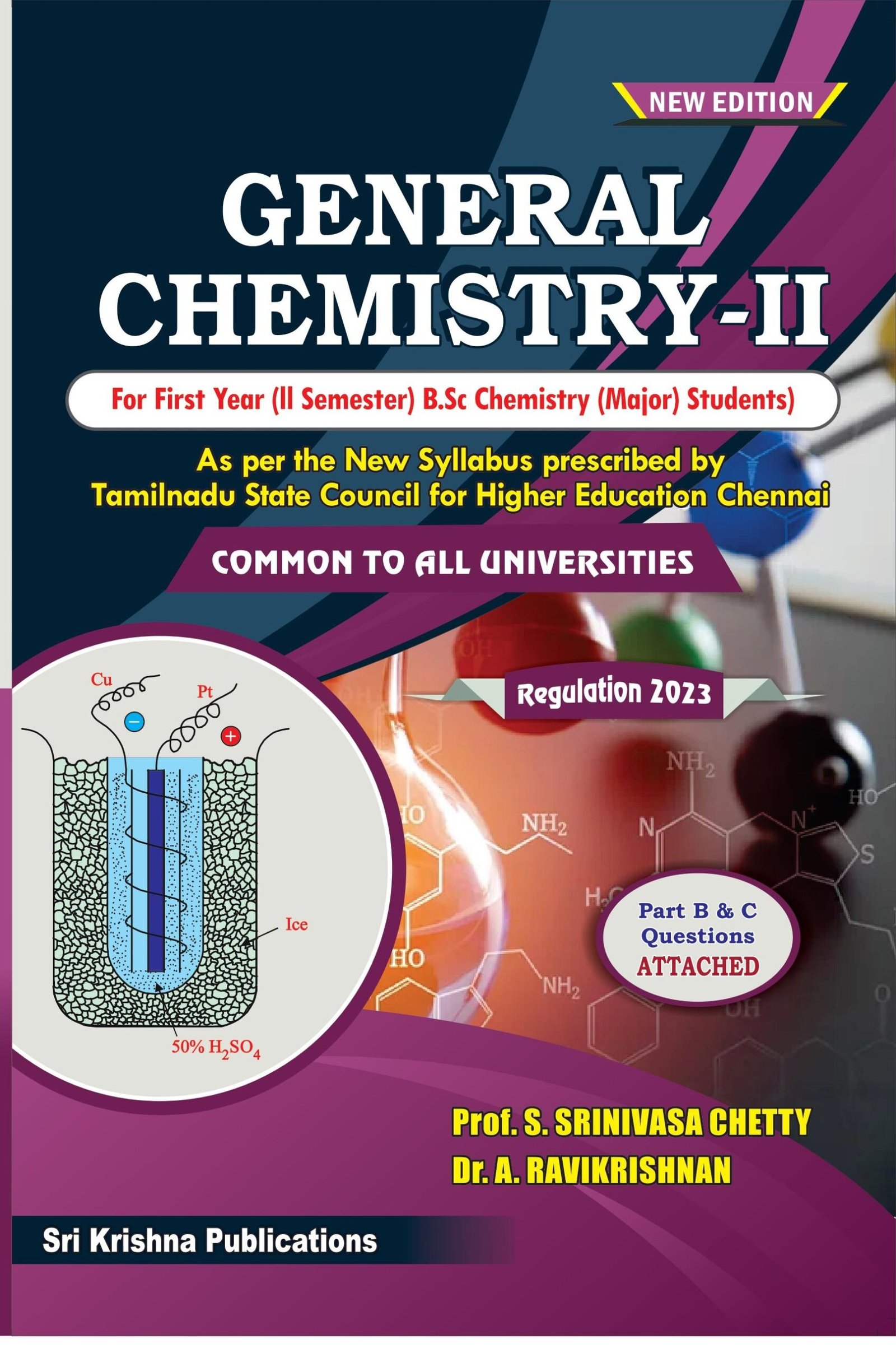







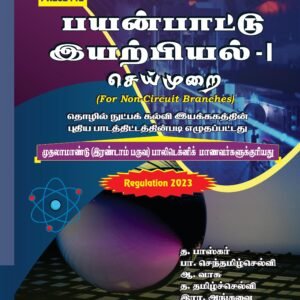


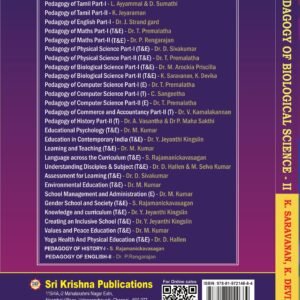

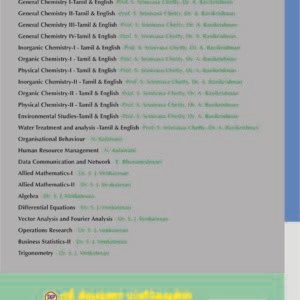
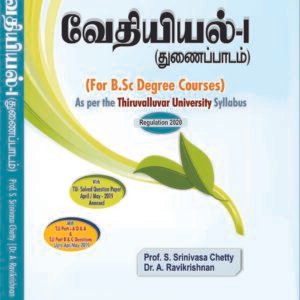
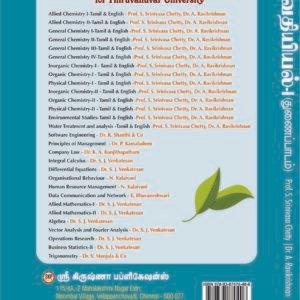
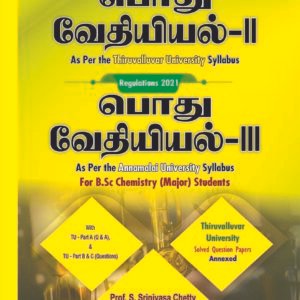


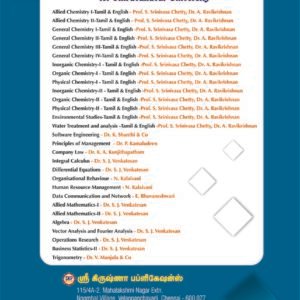

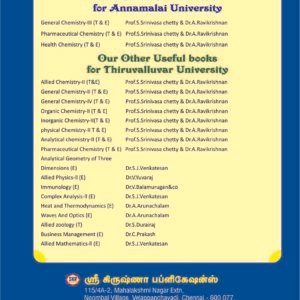
Reviews
There are no reviews yet.